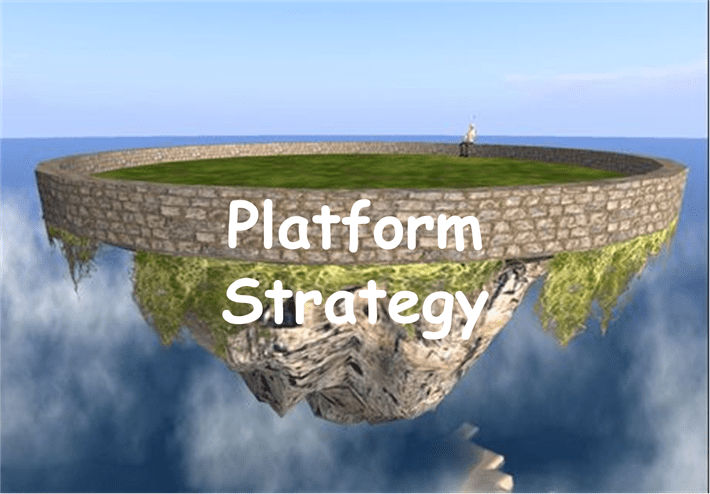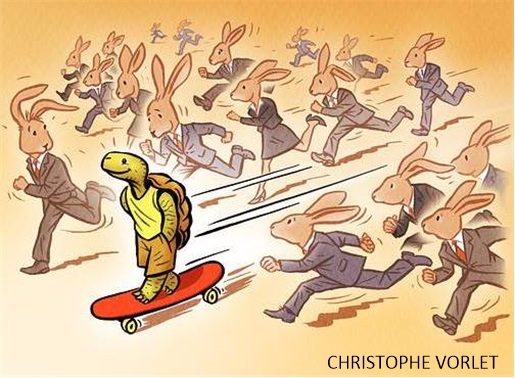Summary: Booz Allen just launched a one-stop shop for all manner of pretested DNN models. They’re even guaranteeing price. This makes buying just like picking accounting, CRM, or HRIS software. Equally as important, it’s a genius example of platform strategy to lock in customers and lock out competitors.
 The common vision of developing and deploying a deep learning model is half-a-dozen (at least) data scientists and engineers slogging away over maybe three to six months before having that MVP to first test in production.
The common vision of developing and deploying a deep learning model is half-a-dozen (at least) data scientists and engineers slogging away over maybe three to six months before having that MVP to first test in production.
Not anymore. Go down to the software store, grab a COTS (commercial off the shelf) DNN for any image or text problem you may have, add a little transfer learning, and slam, bang, thank you ma’am you’re in production. DNN applications are now commodity software like accounting, HR, CRM, or MRP software.
If all of this sounds a little farfetched you weren’t paying attention last week when Booz Allen launched its app store for AI called Modzy. There are two excellent lessons here:
- One about the inevitability of meeting customer demand by removing obvious pain points.
- The second about how Booz Allen has implemented a platform strategy and conceivably stolen a march on many consulting and AI development competitors.
First the story about how our customers always drive development, not the other way around even in a world as exotic as deep learning.
Satisfying the Customer
The reasons more DNN image and text classification apps are not in production are very well understood. From the customer’s perspective they are:
- Need to hire and maintain a very expensive data science shop which will custom develop or continuously tweak the application.
- It will take a long time.
- Chances of successful implementation in production are not that good. Case studies are rife with examples of models built by the DS team that didn’t generalize in production or didn’t scale.
- Can’t estimate, much less control what the cost of all this is going to be. Planning for project ROI is a crap shoot at best.
- Don’t even know if your DS team will use the most modern or most appropriate techniques since they change so rapidly. And don’t know if the accuracy is good or even good enough.
- Unsure my DS team has identified the limits of the system. Are there specific situations in which the model will return substandard or even incorrect results.
As the customer you could buy from one of many startups who say they are good at facial recognition, car counting, NLP/NLU, translation, or whatever other business challenge you’d like to automate. But finding that one consultant who is actually up on all the competitors in even a narrow application field is another crap shoot. Chances are you’re educating that consultant on your dime and the selection process will take maybe three to six months.
Booz Allen and Modzy.com
Booz launched Modzy specifically to address these points. It’s a:
- One stop shop where DNNs for a wide variety of applications are available.
- The apps are pretested and essentially vetted by Booz. Fewer than a dozen commercial developers and some open source are represented among the roughly 50 apps including Hypergiant, Orbital Insight, AI.Reverie, Apptek, CrowdAI and Paravision.
- They are guaranteed to work and scale. Booz is building a bench of experienced data scientists with experience in each specific app so you have confidence in the implementation.
- Oh yes, Modzy itself is the platform on which these run. You can have it cloud, on prem, hybrid, or SaaS.
- Booz will tell you the price in advance. No more guessing about project ROI.
- The accuracy of each app is clearly displayed along with any special conditions under which the DNN might not work well.
Wow, if it’s really that simple, why wouldn’t you shop there?
What’s in the Modzy Shop:
Pretty much anything a government or commercial client could want.
Locate / Detect
- Name entity recog. English
- Name entity recog Arabic
- Arabic to English translate
- Overhead building detection
- SAR ship detection
- Image based SAR ship detection
- Dominant color detection
- Off nadir building detection
- Building damage classifier
- Building damage assmt
- Satellite manuever detection
- Space object propulsion classifier
- Car detection
- Car detection in FMV
- Fall detection (human)
- Facial Detection
- Hyper parser
- Weapon detection
- Data poisoning detection
- General object detection overhead
- Face recognition
Label / Classify
- Image classfctn
- Voice re-identification
- Sentiment classfctn
- Spoken language identification
- Language identification
- Military equip classfctn robust
- Image classfctn robust
- Military equip classfctn
- Building damage classifier
- Car detection
- Vehicle activity detection
- Automobile classfctn
- Fall detection (human)
- Weapon detection
- Voice mail spam filter
- NSFW image classfctn
- Audio finger printing
- Extremist content detection
- Pedestrian activity detection
- Speaker detection
Transcribe / Translate
- Auto speech recognition English
- Auto speech recognition Arabic
- Auto speech recognition Spanish
- Mandarin to English
- Korean to English
- Text summarization
- Machine Translation English to Arabic
- Machine Translation English to Spanish
- Multi language OCR
- Russian to English
- Speech transcription
- Text to speech conversion
- Video captioning
- License plate detection
Vectorize
- Object embedding
- Facial embedding
- Graph embedding
Enhance / Preprocess
- Geospatial image registration
- Image registration
Track
- Object tracking
- Object position tracking
Count
- Car detection
The current offering lists about 65 application but some are duplicates in different categories. Booz says soon there will be hundreds.
What you won’t find in Modzy are any ML models. No ‘next best offer’ or recommenders. This is strictly focused on DNN models. ML implementations are already very reliable so there are few pain points to address.
Brilliant Platform Strategy
Beyond the details of the ‘store’, this represents a really brilliant platform strategy.
A Platform Strategy is technically described as a two-sided market, or two-sided network. The centerpiece is an intermediary economic platform with two distinct user groups, typically buyers and sellers, which adds value to the transactions by exploiting Metcalfe’s law, showing that the value of the network increases with the number of users.
There are several key characteristics here:
- Economies of scale allow the platforms to provide increasing levels of benefit to both parties. These might be economic in terms of sales volume or discounts. But they are equally likely to be intangible.
- Information and interactions are the source of value. The platform can customize the user experience to both users’ benefit further increasing usage. This is where AI/ML becomes critical.
- The resources being organized aren’t owned by the platform company and even the management of the network is mostly provided by the participants (e.g. providing profiles, learned preferences, pricing and product/services tailored by providers).
 Companies adopting platform strategies are racing to the front.
Companies adopting platform strategies are racing to the front.
- 13 of the top 30 global brands are now platform companies and growing strong.
- Platform companies trade at 4 to 11 X revenues, compared to tech companies at 3-7X, and services companies at 1-3X. And note that’s a multiple of revenues not profit! (Barry Libert, Professor Digital Transformation, DeGroote School of Business, McMasters Univ., Toronto)
- Leading platform companies like Uber, Airbnb, and Instagram eclipsed the market cap of their traditional competitors in just 6 or 7 years compared to the decades those traditional companies took to achieve that.
So how does this apply to Booz and Modzy? First of all Booz is a well-established international consulting firm with a strong presence in both the commercial and government world. They don’t technically control their clients but those clients will certainly sit up and take notice when Booz gets behind a movement like this.
Information that is essentially free is the glue that binds all this together. What exactly each DNN will do, how well it will do it, and how much it will cost.
Derisking the purchase is also a huge draw.
And while I have long been a proponent of always using the most accurate model to achieve the greatest possible benefit, taking all these other factors into consideration, a good-enough model could easily be the right business decision.
Booz has now also introduced itself as a gatekeeper to all those DNN startups that would like to access this market. Who exactly Booz will allow on Modzy is clearly a topic with both financial, experiential, and ease of use components.
Will the Other Major Platform Players Follow?
Will Google, Microsoft, and the other cloud providers follow this model? If you’re getting paid by the flop then you really want as many competitors participating as possible. The Modzy model looks to pick winners and losers so my guess is that cloud providers won’t rush to this.
Other major professional services companies looking to create a tighter bond with their clients probably will.
And the final lesson is that if you’re one of the hundreds of startup DNN shops looking for a market, you had best get on board with these platforms before you find yourself excluded.
Other articles on AI Platform Strategy
AI/ML Lessons for Creating a Platform Strategy – Part 2
AI/ML Lessons for Creating a Platform Strategy – Part 1
A Radical AI Strategy – Platformication
Now that We’ve Got AI What do We do with It?
Capturing the Value of ML/AI – the Challenge of Offensive versus Defensive Data Strategies
The Case for Just Getting Your Feet Wet with AI
The Fourth Way to Practice Data Science – Purpose Built Analytic Modules
From Strategy to Implementation – Planning an AI-First Company
Comparing the Four Major AI Strategies
Comparing AI Strategies – Systems of Intelligence
Comparing AI Strategies – Vertical versus Horizontal.
What Makes a Successful AI Company – Data Dominance
AI Strategies – Incremental and Fundamental Improvements
Other articles by Bill Vorhies
About the author: Bill is Contributing Editor for Data Science Central. Bill is also President & Chief Data Scientist at Data-Magnum and has practiced as a data scientist since 2001. His articles have been read more than 2 million times.
He can be reached at:
